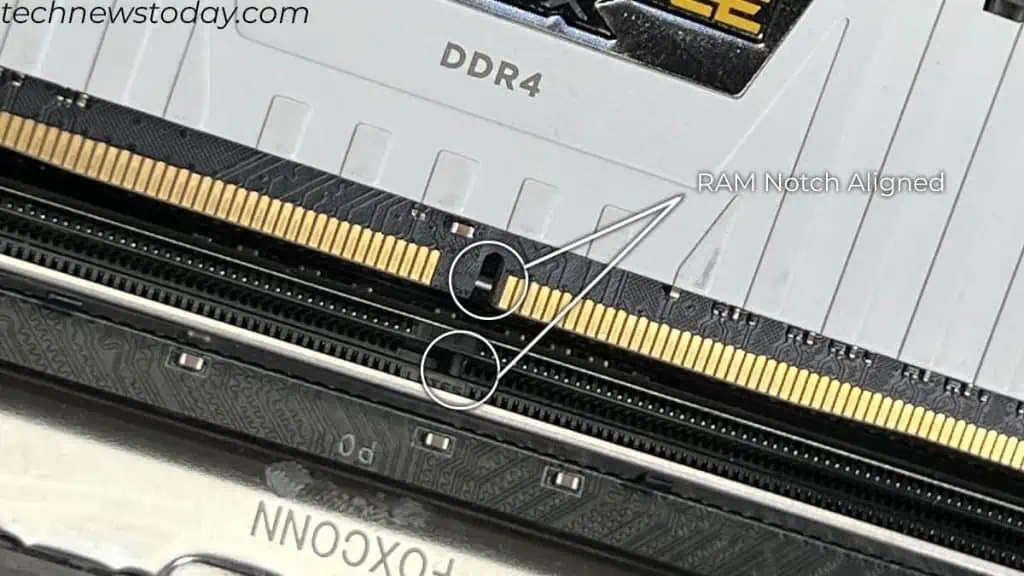DDR versions do not support forward or backward compatibility. So,you cannot use a DDR3 memory stick in a DDR4 slotand vice-versa. Not only this, youcannot mix RAMwith different DDR versions on any motherboard.
DDR3 and DDR4 memory havedifferent numbers of pinsand run on speeds that are poles apart. This also means theRAM operates on different voltages. To prevent users from connecting the wrong stick and slot, thekeying/notch is in a different location.
However, there are some motherboards with DIMM slots that support different DDR versions. Here too, you may only connect aDDR RAM typewith its designated DDR slot.
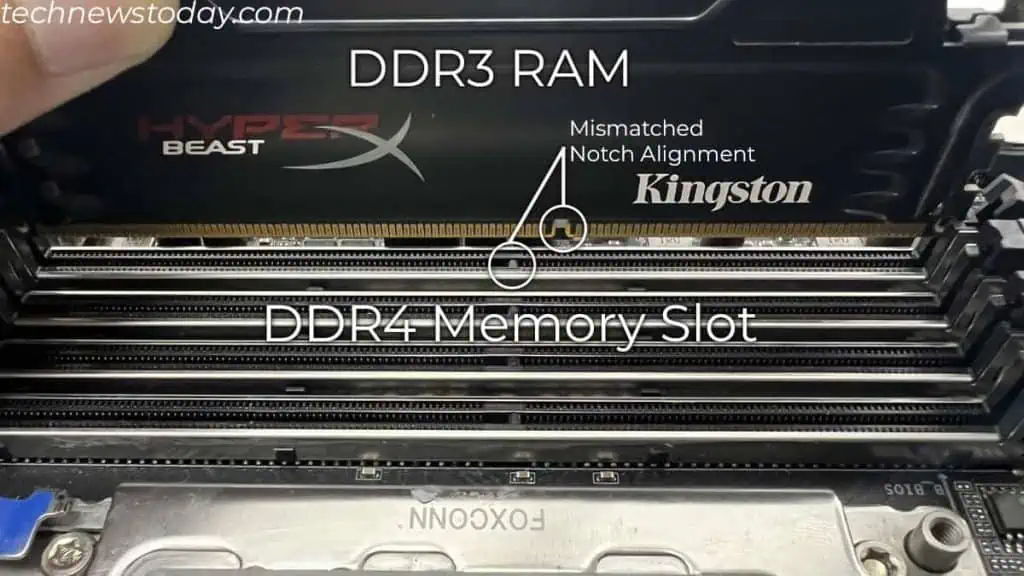
Physically Not Possible
The notch on the DDR3 stick is slightly on the right side. While for DDR4 slot, it’s near the center. So, you cannot physically install a DDR3 on a DDR4 slot.
Besides keying/notch, there is another physical attribute that restricts users frominstalling DDR3 RAMin a DDR4 slot.
As you may see in the picture, the DDR4 RAM has aslight bulge areaaround the center. To accompany this, the DDR4 slot also has asmall dent. This allows the DDR4 RAM and DDR4 slot to fit in perfectly.
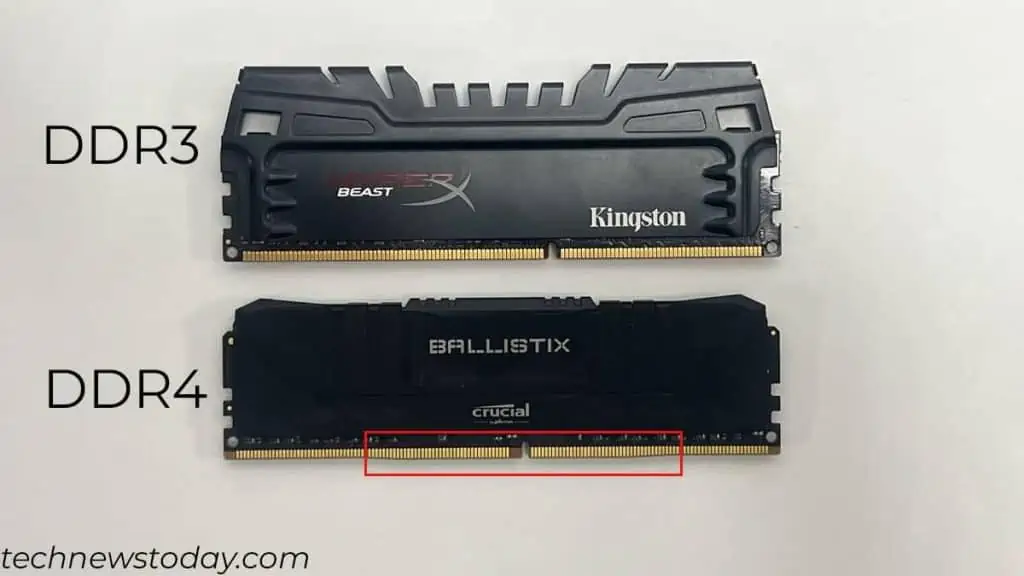
To prevent users from connecting different DDR generations, the notch/key and the small bulge exist. So, if you attempt to force insert a RAM of a different generation into the slot,the RAM slot,sticks, or theMobo will get damagedand not work later.
The internal architecture of each DDR generation is completely different. Newer DDR generation comes with the latest technology and data transfer mechanism.Older DDR slots are not designed to operate with newer DDR memory modules.
In the same way, DDR3 and DDR4 memory modules are completely different. DDR4 runs at a higher speed of up to5333 MT/sandperformance is much better. While DDR3 is limited to3200 MT/s.
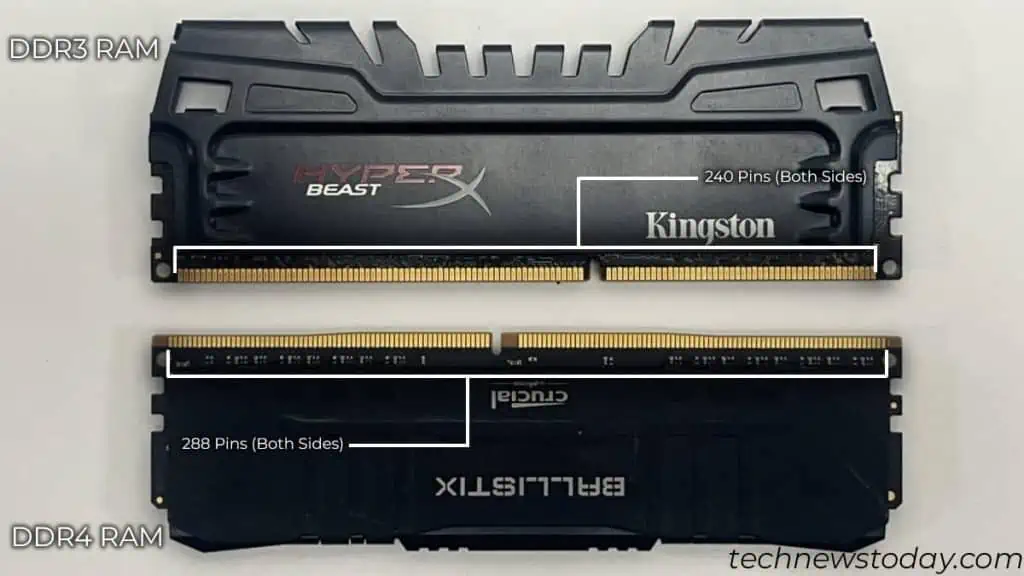
It also has a greater bandwidth andsupports a higher capacity. DDR4 slots are designed to support these specifications.
Here are a couple of other reasons why communication is impossible between DDR4 slots and DDR3.
Mismatched Number of Pins
Both DDR3 and DDR4 communicate to the CPU using the 64-bit wide bus. Even though it uses the same memory bus, how it communicates with the CPU is completely different.
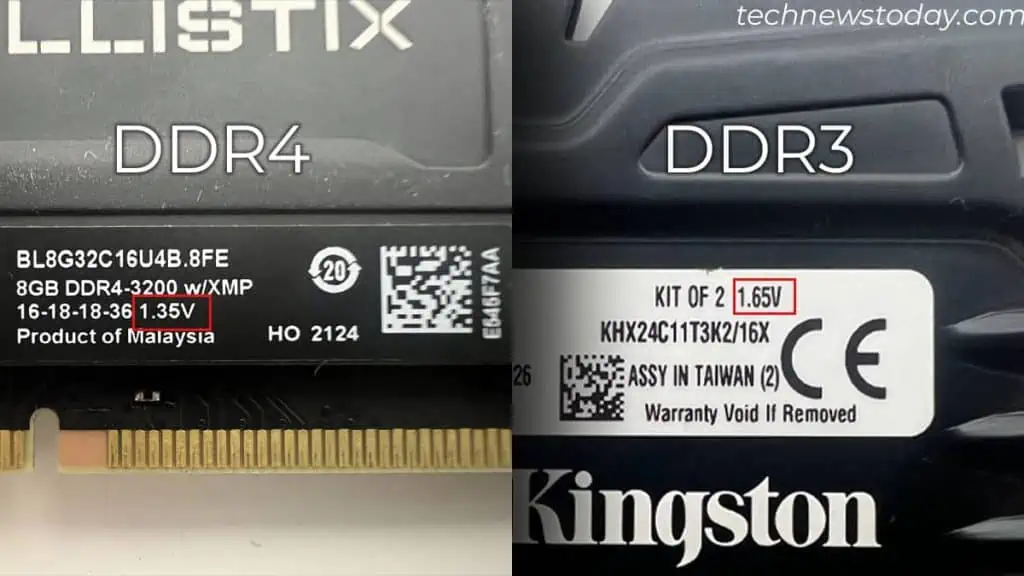
The two DDR types have different numbers of pins and so does the slot. DDR3 has a total of240 pinsfor DIMMand204 for SODIMM. DDR4 has288 for DIMM unitsand260 for SODIMM.

